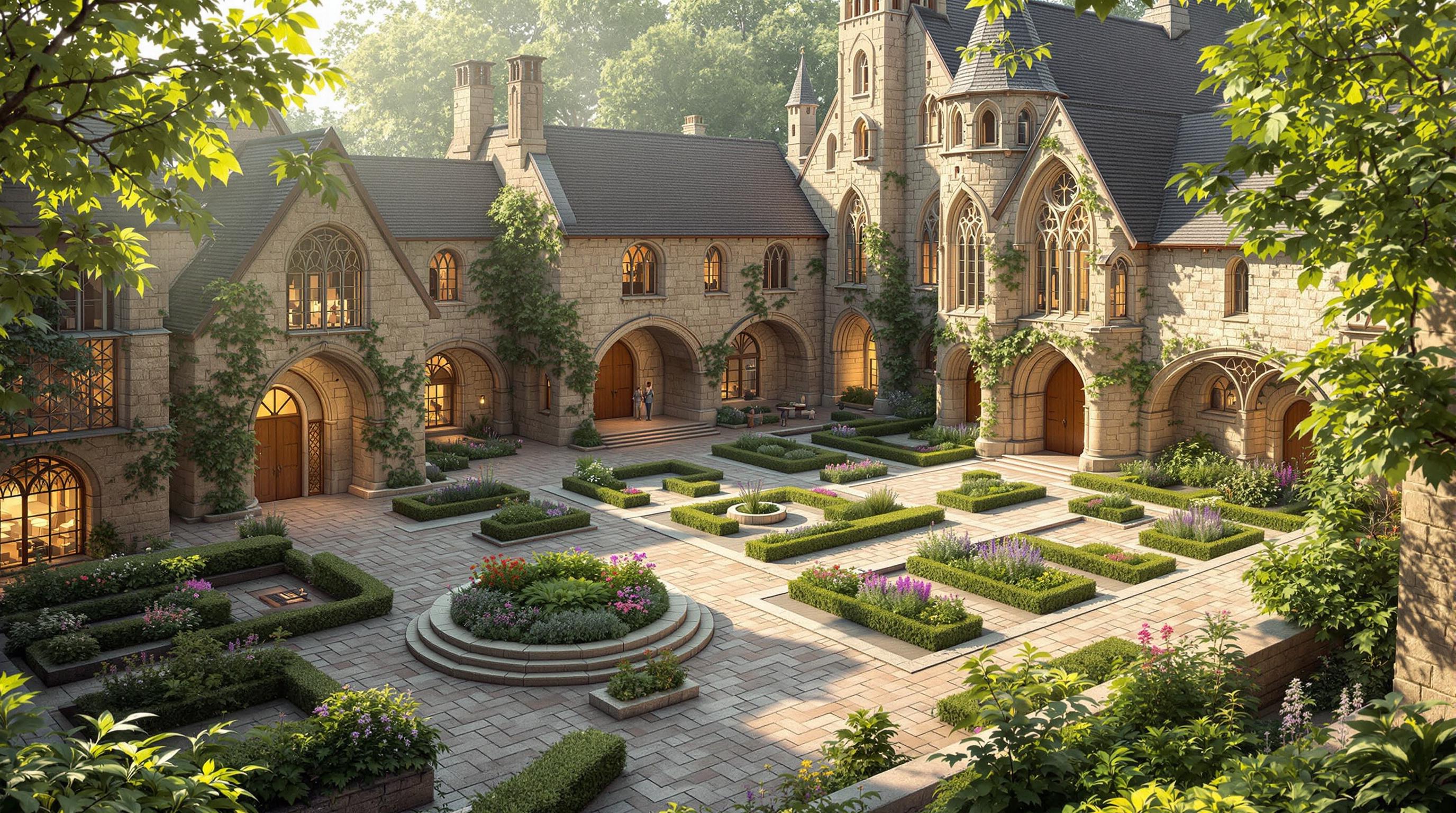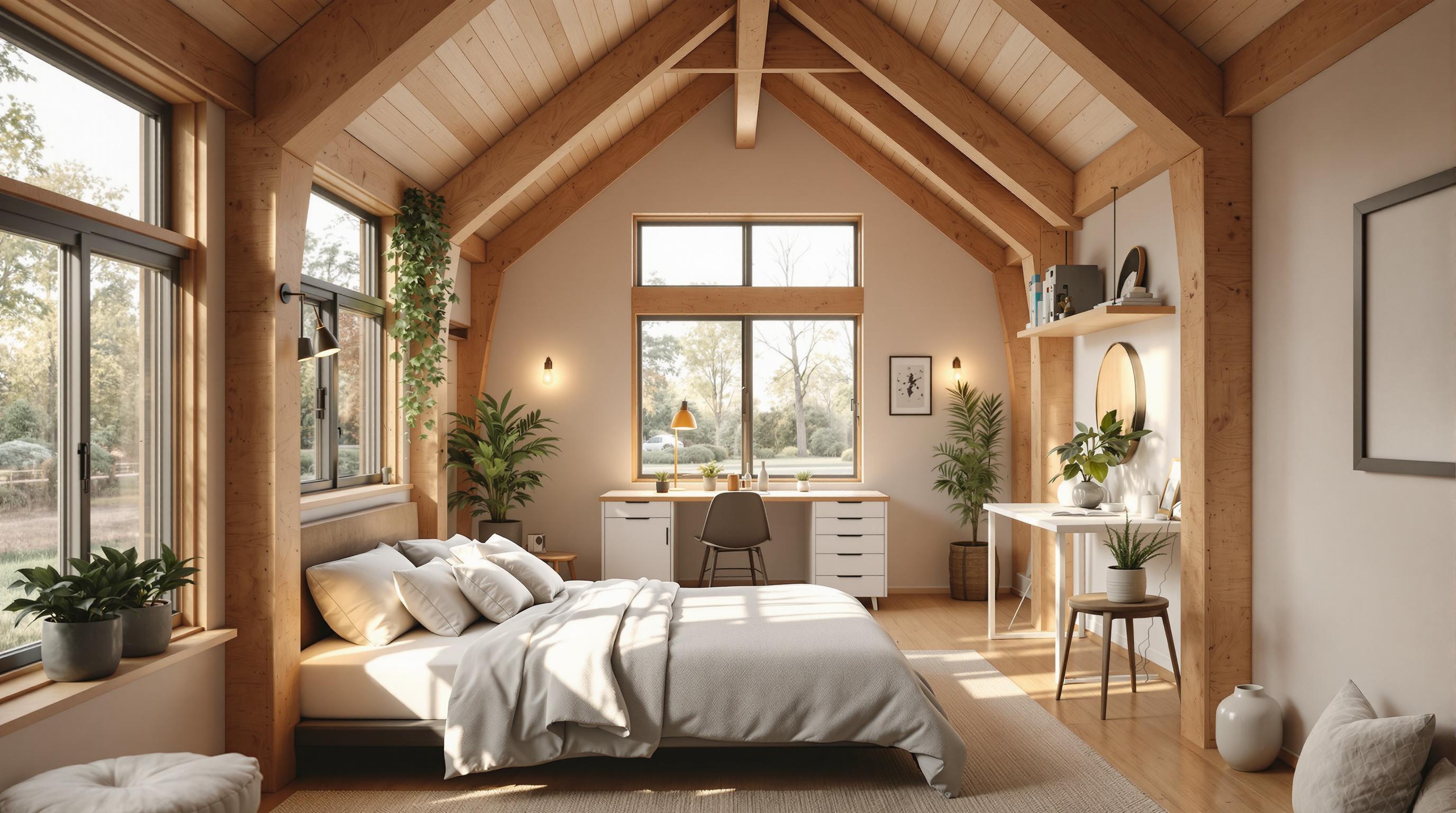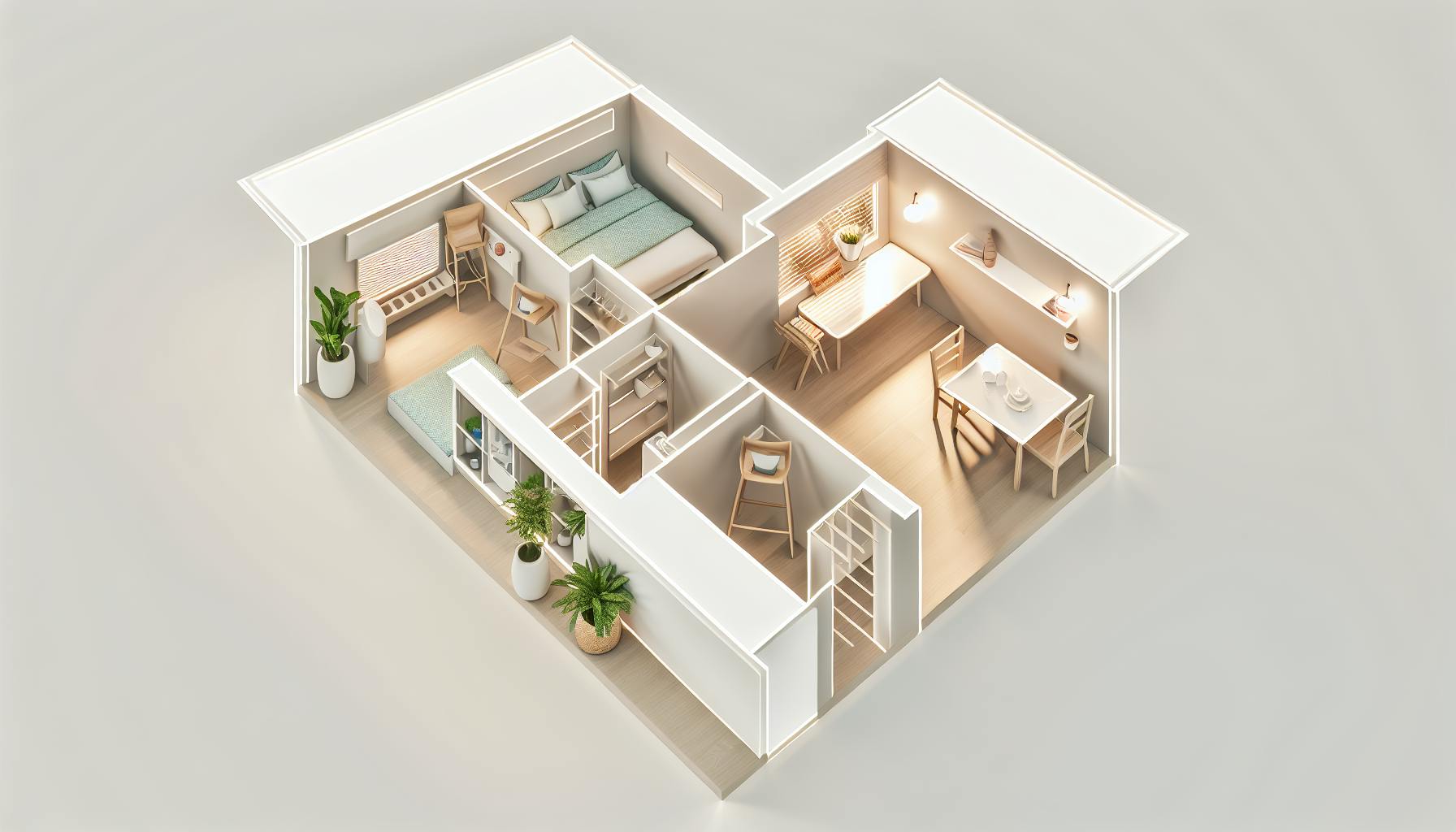Tiny houses on stilts are compact homes elevated on raised platforms, typically 100-400 square feet in size. They offer:
- Flood protection
- Better views
- Improved airflow
- Extra usable space underneath
Key benefits:
- Stay dry during floods
- Enjoy panoramic views
- Get more privacy
- Create storage or living space below
Popular foundation types:
| Type | Best for | Stability |
|---|---|---|
| Deep post | Uneven ground, wind | High |
| Pier | Slopes, wet soil | Medium |
| Pedestal | Style, easy utilities | Medium |
Eco-friendly features:
- Minimal land impact
- Energy-efficient design
- Use of sustainable materials
Building tips:
- Focus on strength and safety
- Keep the design simple
- Choose durable materials
Tiny houses on stilts combine smart living with environmental consciousness, offering a unique solution for those seeking a simpler, greener lifestyle.
Related video from YouTube
Why choose a tiny house on stilts?
Tiny houses on stilts aren't just cool-looking - they're practical too. Here's why you might want one:
Stay high and dry
Stilts keep your home above the danger zone:
- No more worrying about floods
- Your stuff stays safe from water damage
- Bye-bye, moisture problems
In Caye Caulker, Belize, most houses are on stilts. It's not just for floods - it keeps people above the mosquito-heavy areas. Smart, right?
Views for days
Living up high has its perks:
- Panoramic views? Check.
- More privacy from nosy neighbors? You bet.
- Feel like you're in a treehouse? Absolutely.
Custom homes near Ponte Vedra Beach, FL are taking advantage of this. Builders there call the views "grand" - and they're not exaggerating.
Fresh air and sunshine
Being elevated isn't just about looks:
- Better airflow throughout your house
- More natural light pouring in
- It can even be cooler in hot weather
Make the most of your space
That area under your house? It's not wasted:
- Store your stuff
- Park your car
- Create an outdoor hangout spot
| Under-House Use | What You Get |
|---|---|
| Storage | Dry, organized space |
| Parking | Protected vehicles |
| Outdoor Living | Extra usable area |
A tiny house on stilts isn't just a home - it's a smart living solution.
Planning your tiny house on stilts
Let's break down planning your tiny house on stilts into three key areas:
Strength and safety
Your stilt house needs a rock-solid foundation:
- Four strong posts anchored in the ground
- Ground sleeve sockets for extra stability
- Quick-drying concrete to secure posts
For a 2m x 2m base:
| Item | Quantity | Purpose |
|---|---|---|
| Ground sleeve sockets | 4 | Anchor posts |
| Quick-drying concrete | 2 bags | Secure posts |
Design
Keep it simple:
- Four posts
- Wooden boards for floor, sides, and roof
- Gable roof for classic look
Want a playhouse? Add a slide or swing set. But remember: simpler = easier to build.
Materials
Wood is key. Options include:
- Spruce: Cheap, needs protection
- Larch: Pricier, weather-resistant
- OSB boards: Easy to paint, install in big sections
For a 2m x 2m stilt house:
| Material | Quantity | Cost (£) |
|---|---|---|
| Squared timber | 10 | 225 |
| Wooden boards | 45 | 450 |
| Countersunk bolts | Lump sum | 20 |
| Wood glaze | 3 | 45 |
| Total | 740 |
DIY project total: about £810 (including foundation materials).
Your planning choices shape your build. Keep it simple, use strong materials, and your tiny house will stand tall.
sbb-itb-1be9014
Types of bases for raised tiny houses
Picking the right foundation for your tiny house on stilts is key. Here are three common types:
Deep post foundations
These use big timbers set in concrete-filled holes. They're good for:
- Uneven ground
- Windy areas
- Flood-prone spots
Ryan Mitchell from The Tiny Life says: "Deep posts are super stable, but you'll need to plan carefully and maybe get a pro to install them."
Pier foundations
Piers are vertical supports driven into the ground. They work well for:
- Slopes
- Wet soil
- Places where you can't dig much
Real-life example: A Florida homeowner built a 400 sq ft tiny house on piers in 2022. It's 8 feet up to dodge storm surges.
Pedestal foundations
These use concrete or steel pedestals. People choose them for:
- Looks
- Easy utility access
- Adjustable height
Tiny House Foundations says: "Pedestals are a nice middle ground. They're stable, look good, and are easier to set up than deep posts."
Here's how they stack up:
| Foundation | Cost | Stability | Setup Difficulty | Best Use |
|---|---|---|---|---|
| Deep Post | High | High | High | Floods, high winds |
| Pier | Medium | Medium | Medium | Slopes, low impact |
| Pedestal | Low-Medium | Medium | Low | Style, easy utilities |
How tiny houses on stilts help the environment
Tiny houses on stilts aren't just cool - they're eco-friendly too. Here's how:
They're gentle on the ground
By lifting houses off the ground, we:
- Keep natural habitats intact
- Let water drain properly
- Don't mess with soil and plants
In flood-prone areas, these homes are lifesavers. They stand tall when water rises, protecting both people and nature.
They're energy-smart
Stilt houses are built to save energy:
- Air flows freely, so you need less AC
- The space underneath keeps things cool
This clever design cuts energy use. In Myanmar, traditional stilt houses use 30% less energy for cooling than regular homes. That's a big deal!
They use earth-friendly materials
Many tiny stilt houses are built with materials that Mother Nature loves:
| Material | Why it's good | Where it's used |
|---|---|---|
| Bamboo | Grows fast, eats up CO2 | House frame, floors |
| Teak | Lasts long, rarely needs replacing | Outside walls |
| Rattan | Grows back quickly | Furniture, decor |
These materials often come from nearby, cutting down on transport pollution. Plus, they grow back fast and don't need much processing.
"Bamboo is a climate change superhero. It sucks up tons of CO2 from the air", says the Environmental Bamboo Foundation.
So, tiny houses on stilts? They're not just homes - they're little eco-warriors!
Wrapping up
Tiny houses on stilts? They're not just cool - they're smart. Here's why:
- They keep you dry when floods hit
- You get killer views
- They're good for the planet
People LOVE these mini-homes. Here's a quick breakdown:
| Perk | What it means for you |
|---|---|
| Flood-proof | Your stuff stays dry when it pours |
| Awesome views | Wake up to scenery, not your neighbor's fence |
| Peace and quiet | Say goodbye to street noise |
| Bonus space | Turn the area below into... whatever |
| Eco-friendly | Less land used, less energy wasted |
Building your stilt house? Keep these in mind:
- Make it tough (it's gotta handle wind)
- Pick a style you dig
- Use materials that'll last
These homes aren't just cute - they're SMART. They sip energy and often use fast-growing stuff like bamboo.
Want to live with less junk and more purpose? A tiny stilt house might be your ticket. It's a big step towards living simpler and greener.


